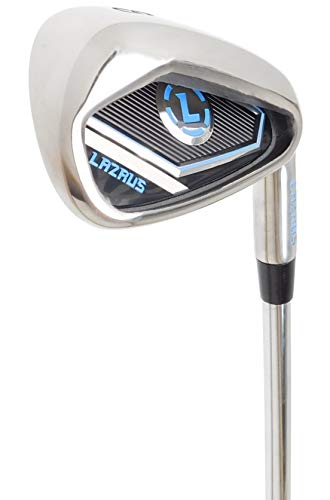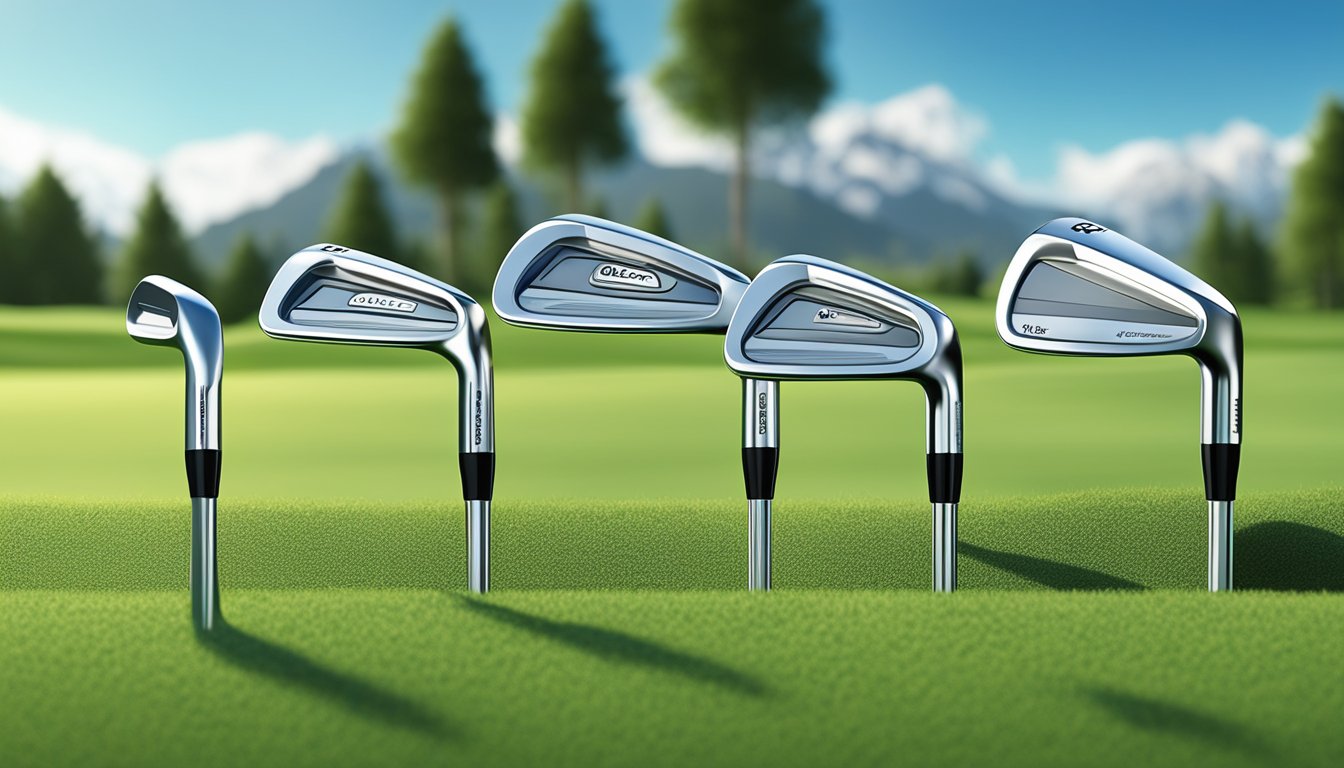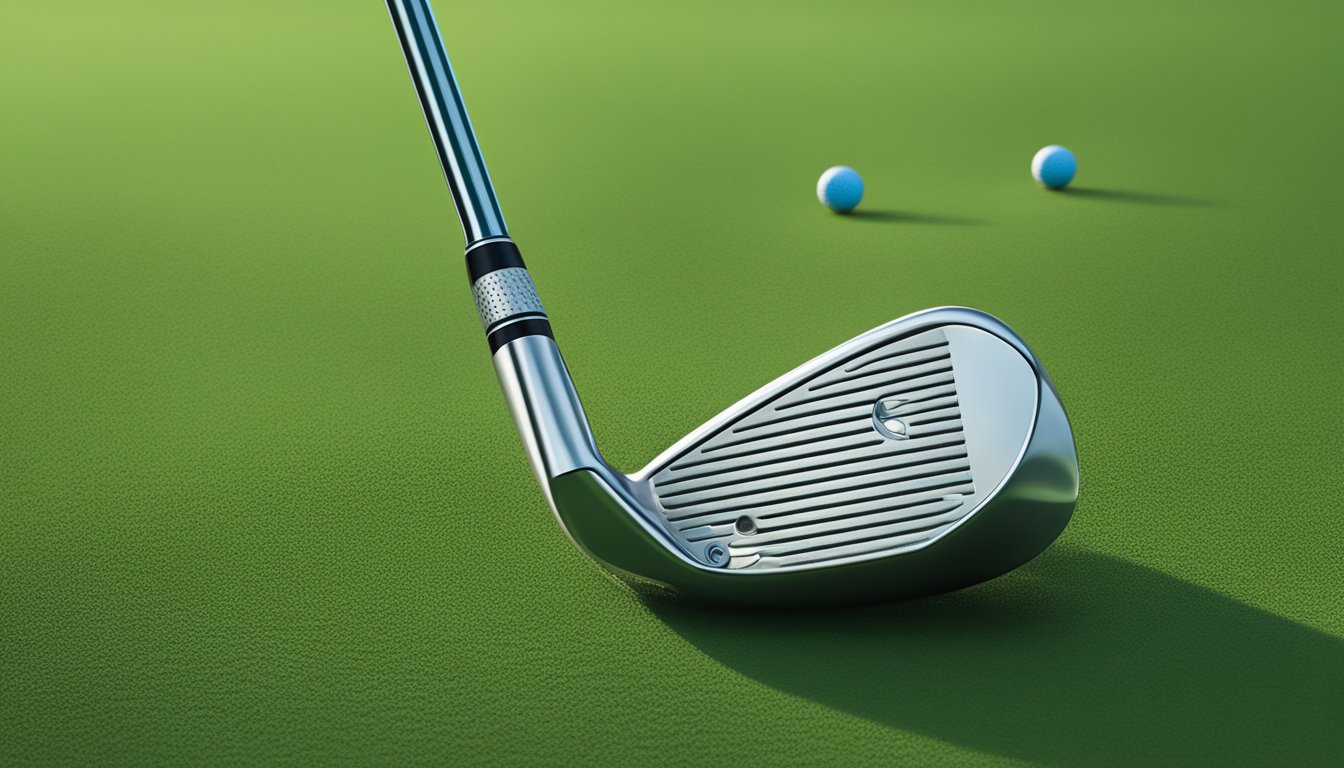If you’re an avid golfer, you know that your equipment is a crucial part of your game. Your golf irons, in particular, play a significant role in your performance, and you want to make sure they’re in top condition. But how long do golf irons last?
The lifespan of golf irons varies depending on several factors, including how often you play, how well you maintain them, and the quality of the clubs themselves. Some golfers replace their irons every few years, while others can use them for a decade or longer. Understanding the factors that affect the lifespan of your golf irons can help you determine when it’s time to replace them.
Factors that affect the lifespan of golf irons include the frequency of use, the quality of the clubs, and how well you take care of them. Signs of wear and tear, such as dents or cracks, can also indicate that it’s time to replace your irons. Choosing the right golf irons for longevity can also help extend their lifespan. In this article, we’ll explore these factors in more detail and provide you with tips on how to keep your golf irons in top condition.
Key Takeaways
- The lifespan of golf irons varies depending on several factors, including frequency of use, quality of the clubs, and maintenance.
- Signs of wear and tear, such as dents or cracks, can indicate that it’s time to replace your irons.
- Choosing the right golf irons for longevity and properly maintaining them can help extend their lifespan.
Understanding Golf Irons
Golf irons are an essential part of any golfer’s equipment. They are typically used for shots that are less than 200 yards from the green. They are numbered from 1 to 9, with the 1-iron being the longest and the 9-iron being the shortest.
Club Head
The head of the iron is the part that strikes the ball. It’s usually made of either forged or cast steel. Forged irons are made by heating a solid block of steel and then shaping it into the desired form, while cast irons are made by pouring molten steel into a mold. Forged irons are generally considered to be of higher quality, but they’re also more expensive.
Shaft
The shaft of the iron is the long, thin part that connects the club head to the grip. It’s usually made of either steel or graphite. Steel shafts are heavier and more durable, while graphite shafts are lighter and more flexible. Graphite shafts are generally more expensive than steel shafts.
Material
The material used to make the club head and shaft can have a significant impact on the performance of the iron. For example, some manufacturers use tungsten to create a club head that has a lower center of gravity. This can help to increase the launch angle of the ball and reduce spin, which can result in longer, straighter shots.
Manufacturers
There are many manufacturers of golf irons, each with their own unique designs and technologies. Some of the most popular manufacturers include Callaway, TaylorMade, Titleist, and Ping. It’s important to choose a manufacturer that produces irons that are suited to your skill level and playing style.
In the next section, we’ll take a closer look at how long golf irons typically last and when it might be time to replace them.
Factors That Affect the Lifespan of Golf Irons
https://www.youtube.com/watch?v=ZctBqp6A7wk&embed=true
When it comes to the lifespan of your golf irons, there are several factors that come into play. Here are the three main factors that affect the lifespan of golf irons:
Frequency of Use and Care
The more frequently you use your golf irons, the more wear and tear they will experience. This can lead to damage such as dents, cracks, and groove wear. It’s important to take care of your golf irons by storing them properly in a golf bag, avoiding extreme temperatures, and cleaning them regularly. By doing so, you can extend the lifespan of your golf irons and keep them in good condition for longer.
Quality and Material of Golf Irons
The quality and material of your golf irons also play a significant role in their lifespan. For example, forged irons wear faster than cast irons but offer a nuanced response. Golf irons made with high-quality materials such as stainless steel or graphite shafts tend to last longer than those made with lower quality materials. It’s important to choose golf irons from reputable manufacturers that use high-quality materials to ensure that your irons last as long as possible.
Impact of Golfing Skills and Techniques
Your golf swing and skill level can also impact the lifespan of your golf irons. For example, high swing speeds and clean contact can wear down golf irons faster than slower swing speeds and less clean contact. It’s important to take lessons and practice good golfing techniques to minimize the impact on your golf irons. Additionally, professional golfers tend to replace their golf irons more frequently due to the amount of play they experience.
By considering these factors and taking proper care of your golf irons, you can extend their lifespan and ensure that they perform well for as long as possible.
Signs of Wear and When to Replace Golf Irons
https://www.youtube.com/watch?v=GnbeQ_em6Yw&embed=true
Golf irons are an essential component of your golf bag, and they are designed to last for a long time. However, over time, they may start to show signs of wear and tear, which can affect your game. In this section, we will discuss the signs of wear and when to replace your golf irons.
Visible Physical Damage
One of the most common signs of wear on your golf irons is visible physical damage. This can include dents, cracks, rust, and groove wear. If you notice any of these signs of wear, it may be time to replace your golf irons. Dents and cracks can affect the performance of your irons, while rust can cause your irons to deteriorate over time. Groove wear can also affect your game by reducing your ability to control the spin and accuracy of your shots.
Changes in Performance
Another sign that it may be time to replace your golf irons is changes in performance. If you notice that your distance off the tee has decreased, or you are having trouble controlling the spin and accuracy of your shots, it may be time to replace your irons. Worn grooves and rough surfaces can affect your ability to hit the ball cleanly, while performance issues may be due to changes in your swing or the fact that your current irons are no longer forgiving enough for your game.
To summarize, signs of wear and deterioration, including visible physical damage, groove wear, and changes in performance, are all indicators that it may be time to replace your golf irons. By keeping an eye out for these signs of wear, you can ensure that you are always playing your best game with equipment that is up to the task.
Choosing the Right Golf Irons for Longevity
When it comes to investing in golf clubs, you want to make sure you are getting the best value for your money. This means considering factors such as quality, budget, and durability. Here are some tips for choosing the right golf irons for longevity:

Considering Quality and Budget
« Callaway Apex DCB Irons Review: The Best Golf Irons for High Handicap Players
Getting Swing on Plane: Tips for a More Consistent Golf Swing »
When it comes to golf clubs, you generally get what you pay for. However, this doesn’t mean you have to break the bank to get a quality set of irons that will last. Look for reviews and recommendations from other golfers to find reputable manufacturers that offer quality clubs at a reasonable price. You may also want to consider buying used clubs, as long as they are in good condition and have been well-maintained.
Keeping Up with Technology
Golf equipment technology is constantly evolving, and new models are being released every year. While it may be tempting to upgrade to the latest and greatest irons, keep in mind that the newest technology doesn’t always guarantee better performance or longevity. Instead, look for irons that have a proven track record of performance and durability. You may also want to consider the materials used in the irons, as some materials may be more forgiving and durable than others.
Investing in a quality golf bag is also important for protecting your clubs and ensuring their longevity. Look for a bag that is made from quality materials and has features such as padded straps and ample storage space.
By considering factors such as quality, budget, and technology, you can find a set of golf irons that will not only improve your performance on the course but also last for years to come.
Frequently Asked Questions

How often should I replace my golf irons?
The frequency of replacing your golf irons depends on several factors, such as how often you play, how well you take care of your clubs, and the quality of the clubs you own. According to Golf Digest, you should replace your golf irons every five years or so. However, if you play more frequently, you may need to replace them sooner.
Is it worth buying new golf irons?
If you’re an avid golfer, then investing in new golf irons can be worth it. Newer clubs are often designed with better technology, which can improve your performance on the course. Additionally, new clubs tend to be more forgiving, which can help you hit straighter and more accurate shots. However, if you’re a casual golfer, you may not notice a significant difference between new and old clubs.
Do expensive golf clubs perform better?
Expensive golf clubs may have better materials and technology, but that doesn’t necessarily mean they perform better. Ultimately, the performance of your golf clubs comes down to how well they fit your swing and playing style. It’s important to get fitted for clubs that are the right length, weight, and flex for you, regardless of their price.
How can I tell if my golf irons are worn out?
Over time, golf irons can become worn out, which can affect their performance. Signs that your golf irons may be worn out include worn down grooves on the clubface, cracks or dents in the clubhead, or loose or damaged ferrules. If you notice any of these signs, it may be time to replace your clubs.
How long do golf club shafts last?
Golf club shafts can last for many years if they are well taken care of. However, if you notice any signs of wear and tear, such as rust or dents, it may be time to replace your shafts. Additionally, if you’re experiencing any discomfort or pain while playing, it may be a sign that your shafts are not the right fit for you.

How often do professional golfers change their irons?
Professional golfers often change their irons more frequently than amateurs. According to National Club Golfer, most professional golfers change their irons every 6-12 months. This is because they play more frequently and put more wear and tear on their clubs than the average golfer.











